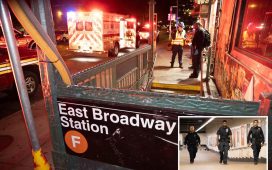A new video developed by the Center for Transportation Studies highlights a multiyear study of pedestrian safety at reservations that was undertaken by U of M researchers and partners from seven Anishinaabe tribes. The work was sponsored by the Minnesota Department of Transportation (MnDOT).
“Historically, state highways have been built through reservations without a lot of consultation with the tribal members,” says project lead Greg Lindsey, a recently retired professor at the Humphrey School of Public Affairs and CTS Research Scholar. “MnDOT has acknowledged past limitations of its work and now is focused on efforts to address transportation challenges that have emerged because of historic decisions. And one of those [challenges] is pedestrian safety.”
In 2016, MnDOT proposed a collaboration with the Advocacy Council for Tribal Transportation and the U of M to improve pedestrian safety conditions on tribal lands. Lindsey and his team were selected to take on the project which involved monitoring crossings and collecting data at 10 sites across four reservations that share geography with Minnesota throughout 2017. The following year, the partners used that data to identify potential countermeasures to improve safety at the riskiest sites—one of which was in the town of Onamia near Grand Casino in east-central Minnesota.
“This corridor in general had a fatality rate that was like three times the state average,” says Mike Moilanen, director of planning and project management for the Mille Lacs Band of Ojibwe. “We knew there were common issues within some of our northern Ojibwe reservations. We kept asking for help and the U of M stepped up and offered their assistance,” he says. “It was amazing once you had data in hand how fast things could move.”
By 2020, the project had been given $300,000 to install such improvements as a high-intensity activated crosswalk (HAWK) signal to help pedestrians safely cross busy State Trunk Highway 169 at site identified in Onamia.
Anthony Zhaawanose Pike, operations manager for roads/solid waste with the Mille Lacs Band of Ojibwe, recalls the changes to the area that contributed to changing travel patterns over time. “I still remember the two-lane highway going down 169 with our old school and community center. Now, we’ve got a big casino.” he says, along with a government center, movie theater, localized market, and other services.
The highway expansion meant that area kids had to cross four different lanes of traffic on a high-speed road to get to school, says Adrien Carretero, tribal operations liaison in MnDOT’s Office of Tribal Affairs. Along with adding the HAWK signal, signage was increased for vehicle traffic. “Now it’s safer for drivers and it’s safer for tribal members who use that intersection,” Carretero says.
Following the HAWK installation, the team evaluated the results while developing a second phase of the research which analyzed pedestrian conditions at a number of other reservations. In addition to the summary report, results from Phase 2 are captured in accessible, online story maps:
Summarizing the success of the collaborative project, Lindsey observes: “It’s fairly atypical that research projects lead to concrete being poured on the ground and lights being installed that will help increase the safety of pedestrians crossing state highways.”
The video is one project of CTS’s 2024 “Rural Needs. Statewide Answers. Improving Transportation for All Communities” thematic focus.
Read CTS Director Kyle Shelton’s introduction to the series.
More resources
Research Report (2024): Pedestrian Risk on Anishinaabe Reservations in Minnesota: Overview and Phase 2 Results.
Research Report (2020): Pedestrian Crossings and Safety on Four Anishinaabe Reservations in Minnesota.
Video (2020): HAWK Crosswalk Demo









